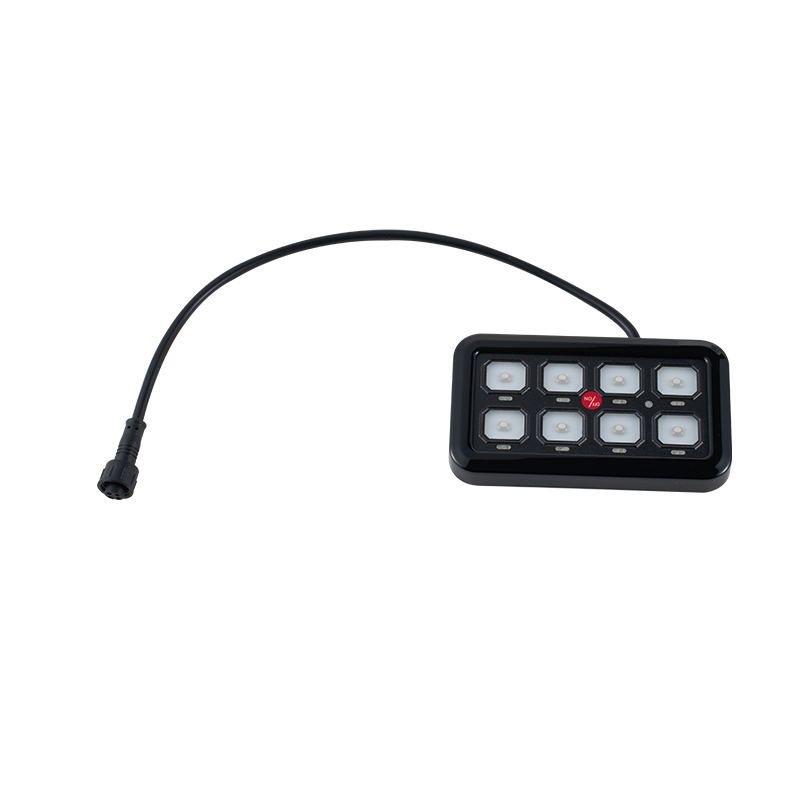- Tel: +86-15305875100
- E-mail: [email protected]
- Please contact us if you have questions.

Switch Panel Factories to Provide Reliable Protection Against Water and Dust Intrusion
Introduction to Waterproof and Dustproof Requirements in Switch Panels
Switch panels are crucial components in many electrical and electronic systems, providing the interface through which users control various devices. Due to their frequent exposure to environmental factors, ensuring effective waterproof and dustproof performance is essential. A Switch Panel Factory must adopt specific design principles, materials, and manufacturing techniques to meet these demanding standards and provide durable, reliable products. This article discusses how these factories achieve the necessary protection and what methods are commonly used.

Design Considerations for Water and Dust Resistance
Achieving waterproof and dustproof capabilities begins at the design stage. Switch panels must incorporate sealing mechanisms that prevent the ingress of liquids and particles without compromising usability. Typical design strategies include the use of gaskets, O-rings, and sealing adhesives around critical points such as buttons, edges, and junctions. These elements create physical barriers that block water and dust from penetrating internal components.
Moreover, the layout of the panel often includes protective lips or recesses around switches and interfaces to divert water away from sensitive areas. The positioning and size of ventilation holes, if any, are carefully calculated to balance pressure equalization with protection. A well-designed switch panel also features smooth surfaces and gaps to reduce places where dust can accumulate.
Material Selection for Enhanced Durability
Materials play a vital role in ensuring the switch panel’s resistance to water and dust. A Switch Panel Factory typically selects high-grade plastics, such as polycarbonate or ABS, which have inherent water-resistant properties and excellent durability. These plastics are often treated with coatings to increase hydrophobicity, causing water to bead and roll off instead of seeping in.
In addition, metals used in switch contacts and housings are often coated with corrosion-resistant finishes to withstand moisture exposure. Rubberized materials are frequently employed for button covers and seals due to their flexibility and ability to maintain tight seals under stress. Choosing materials that resist aging, UV exposure, and temperature fluctuations also contributes to long-term waterproof and dustproof performance.
Manufacturing Techniques That Ensure Sealing Integrity
The production processes in a Switch Panel Factory are crucial to guaranteeing waterproof and dustproof features. Advanced techniques such as ultrasonic welding, overmolding, and precision injection molding are commonly used to form tight seals between components without gaps or weaknesses.
Ultrasonic welding, for example, bonds plastic parts together by using high-frequency vibrations, creating a seamless connection that prevents water and dust penetration. Overmolding allows manufacturers to combine rigid and flexible materials in one piece, embedding seals directly into the panel’s structure. Precision molding ensures that parts fit well, reducing the likelihood of leaks.
Quality control during manufacturing includes rigorous testing methods such as IP (Ingress Protection) rating assessments, where panels are exposed to controlled water jets and dust chambers to verify resistance levels. Leak detection and pressure testing also help identify any vulnerabilities before products leave the factory.
Ongoing Innovations and Industry Standards
As environmental challenges grow and user expectations rise, Switch Panel Factories continually innovate to improve waterproof and dustproof performance. New seal materials with enhanced elasticity and longevity are being developed, along with nano-coatings that provide ultra-thin, invisible protective layers.
Adherence to international standards such as IP67 or IP68 certification ensures that switch panels meet strict criteria for water and dust resistance, which is particularly important for industrial, automotive, and outdoor applications. Factories also collaborate with design engineers to customize solutions that fit unique operational environments.
The waterproof and dustproof performance of switch panels is the result of careful design, material selection, precise manufacturing, and thorough testing. A reputable Switch Panel Factory integrates all these aspects to deliver reliable and durable products capable of withstanding harsh conditions while maintaining suitable functionality.
News categories
Related Products
Request for a call today
-
-
Sophia Ye
-
Phone: +86-15305875100
-
WhatsApp: 15305875100
-
Email: [email protected]
-
- Mobile Terminal


 English
English Español
Español














